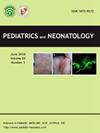Jordanian parental perception of screen time and its association with psychological distress: A cross-sectional design
IF 2.3
4区 医学
Q2 PEDIATRICS
引用次数: 0
Abstract
Background
The excessive use of electronic devices among children is a global concern because of its negative impact on behavior. This cross-sectional study aimed to assess parents' awareness of their children's electronic device use and their perspective on how screen time affects behavior for 4–10-year-olds in Jordan.
Methods
A cross-sectional study was conducted to assess parents' awareness of their children's electronic device usage. The study included 807 mothers and fathers from Jordan with at least one child aged 4 to 10. The data collection instrument consisted of a self-administered survey with 43 questions, including sociodemographic characteristics and the Strength and Difficulties Questionnaire. Descriptive analysis, categorical Chi-square test, Independent t-test, and Mann-Whitney U test were used for statistical analysis. The study followed ethical standards and principles.
Results
A survey of 807 parents in Jordan found that gaming and videos were the most common content watched by children, and 61.3% used devices alone. Only 37.1% of parents believed that device use could improve their children's psychological growth, while 72.7% and 65.9% believed it could impact negatively their children's mental and psychological growth, respectively. The Strengths and Difficulties Questionnaire showed that 51.4% of children were normal, while 25.3% were borderline and 23.3% were abnormal.
Conclusion
Children in the study used electronic devices excessively and this was linked to severe behavioral problems. Parents should follow AAP guidelines and spend more time with their children through non-electronic activities to improve their behavior.
约旦父母对屏幕时间的看法及其与心理压力的关系:横断面设计
本文章由计算机程序翻译,如有差异,请以英文原文为准。
求助全文
约1分钟内获得全文
求助全文
来源期刊

Pediatrics and Neonatology
PEDIATRICS-
CiteScore
3.10
自引率
0.00%
发文量
170
审稿时长
48 days
期刊介绍:
Pediatrics and Neonatology is the official peer-reviewed publication of the Taiwan Pediatric Association and The Society of Neonatology ROC, and is indexed in EMBASE and SCOPUS. Articles on clinical and laboratory research in pediatrics and related fields are eligible for consideration.
 求助内容:
求助内容: 应助结果提醒方式:
应助结果提醒方式:


